FAN DESIGN WITH A SCENE FROM THE COMEDY DON QUIXOTE
FRENCH SCHOOL ABOUT 1730
Gouache on paper, original XVIII rococo frame with old glass.
22.5 x 40.5 cm / 8.9 x 16 inches, with frame 31 x 49 cm / 12.2 x 19.3 inches
PROVENANCE
France, private collection
DON QUIXOTE, THE BOURBONS, AND THE RISE OF SPANISH FASHION IN FRANCE
The War of the Spanish Succession (1701–1714) and the subsequent establishment of the Bourbon dynasty in Spain marked not only a major shift in European politics but also sparked a wave of cultural hispanophilia in France. With Philip V of Spain, grandson of Louis XIV, on the Spanish throne, Spanish culture was suddenly in vogue at the French court. This fascination extended into fashion: aristocratic women began to wear mantillas, accessories inspired by Spanish dress appeared in portraits and masquerades, and theater productions embraced Iberian themes. Our fan design belongs to this very moment of cultural convergence—a moment where the elegance of French baroque met the exotic flair of Spanish drama.
DON QUIXOTE ON THE FRENCH STAGE: THEATER, BALLET, AND SCENOGRAPHY
In the early 18th century, Don Quixote captivated the French stage. Between 1715 and 1730, French dramatists and choreographers reimagined Cervantes’ novel as a source of spectacular visual storytelling. Rather than philosophical depth, they focused on burlesque charm, visual comedy, and the ideal integration of narrative and dance. Jean Galbert de Campistron, Destouches, Fuzelier, Marivaux, and Coypel all offered reinterpretations of key episodes, often with little fidelity to the text but great theatrical imagination.
One such episode, Camacho’s Wedding, became a favorite. Described by Cervantes with satirical opulence, it was an irresistible subject for the stage: lavish banquets, humorous chaos, and Don Quixote’s noble absurdity. In 1720, Charles-Antoine Coypel turned it into a heroic-comic ballet, and the scene gained a firm place in the theatrical repertoire.
A FROZEN SPECTACLE: THE AESTHETICS OF OUR FAN DESIGN
The gouache presented here—originally mistaken for a stage design—is in fact a fan composition, as revealed by the curvature of its layout. It captures The Arrival of Don Quixote at Camacho’s Wedding in the visual language of early 18th-century French scenography. Richly draped curtains, multiple planes of action, expressive gestures, and a festive setting all echo the conventions of baroque theater. In the center, graceful ladies carry platters; on the left, the familiar silhouettes of Don Quixote and Sancho Panza; and in the background, a city rises under a soft atmospheric haze. This is not just a painted scene—it is a miniature spectacle, a theater compressed into a hand-held object.
THE FAN: A SYMBOL OF FASHION, POWER, AND PERFORMANCE
Far from being a mere accessory, the fan was an extension of personality, fashion, and even communication. In the 17th and 18th centuries, it became a “sceptre of femininity,” used to hide a smile, emphasize a gesture, or silently express emotions. Its leaf—silk, vellum, or paper—served as a canvas for mythological, pastoral, or theatrical scenes, often painted by leading miniaturists. In courtly life, the fan was both a cooling device and a performance tool, accompanying women through salons and ballrooms in an endless choreography of elegance and meaning.
This design, with its theatrical Spanish subject and baroque refinement, captures that dual nature. It is both artwork and artifact—a celebration of Don Quixote, of early 18th-century theater, and of the fan as a quintessential object of style and storytelling.




















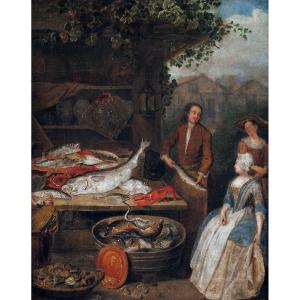




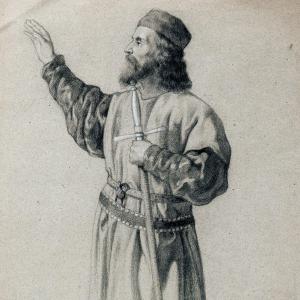

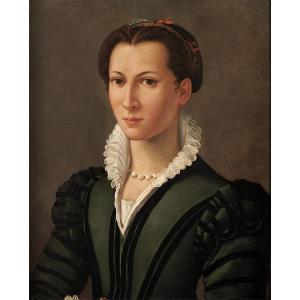

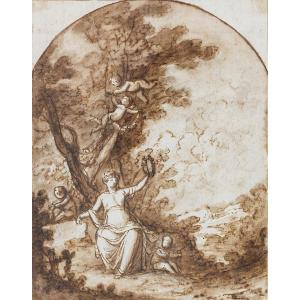
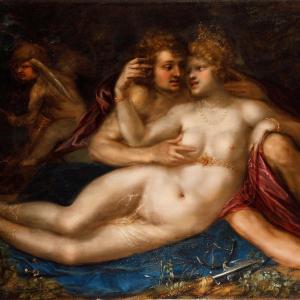


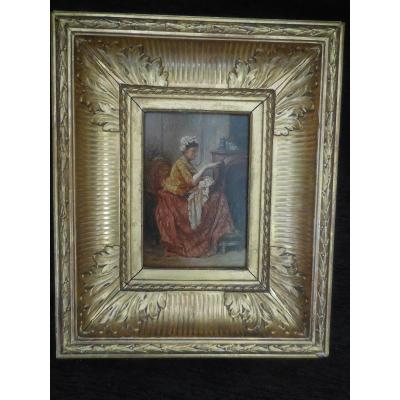

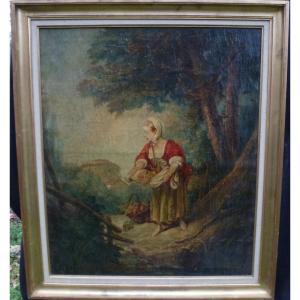



 Le Magazine de PROANTIC
Le Magazine de PROANTIC TRÉSORS Magazine
TRÉSORS Magazine Rivista Artiquariato
Rivista Artiquariato